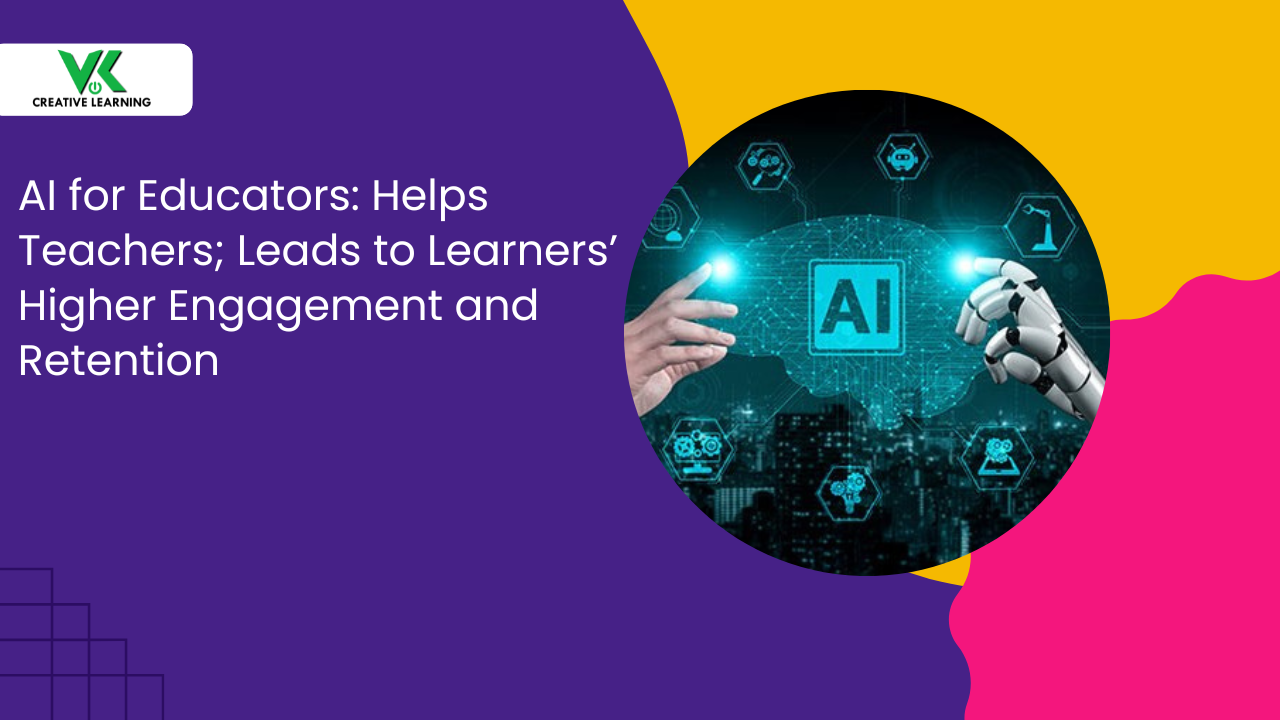Online Education Platforms for Students: What Most Institutions Overlook (But Shouldn’t in 2025)
July 05, 2025
Of late, students want flexible, digital education that aligns with modern learning needs (mobile courses, quick modules, virtual mentors). The reason: to develop extra knowledge that will be handy for exams and in the future.
Hence, institutions chase scalable platforms that can offer engaging and immersive content ( best technology for content creation). For the same, administrators scout out online education platforms in India and afar for learners -- not an easy task!
Importantly, these digital tools promise cost-cutting benefits and a far-flung outreach. That is, they look for an online learning platform that is budget-friendly and can be operated remotely. Equally, the platform should cater to varied learning styles via multimedia-packed lessons -- a rainbow of methods. This is where a custom e-learning platform can be handy with multiple features.
Table Of Contents:
- Where Real Learning Happens Through an Online Platform
- Why Institutions Must Prioritize Overlooked Features in Online Education Platforms
- Sneak Peek into the Learning Overhaul -- Why E-learning
- What Online Education Platforms Are and Why E-Learning Reigns
- Core Elements of Online Education Platforms
- Fully-Featured E-Learning Platforms
- Why E-Learning Outshines Other Ordinary Online Education Courses
- Standout Elements That Elevate E-Learning
- Possibly Overlooked Challenges In Conventional Online Courses
- Challenge 1: Mobile-First Design Neglect
- Challenge 2: Personalized Learning Gaps
- Challenge 3: Insufficient Data Privacy Measures
- Challenge 4: Static Content Delivery
Where Real Learning Happens Through an Online Platform
Education platforms such as e-learning can combine 3D animated explanatory videos, gamified lessons, and thought-provoking forums. That is, education platforms for students can consist of video breakdowns of a chapter.
Online platforms such as electronic learning also encompass elements such as puzzle quizzes and customized explanations of chapters.
Additionally, they incorporate tracking elements along with analytics dashboards that provide clear insights into the students' progress. These insights are in the form of visual graphs and students' performance metrics.
Furthermore, they slot in tutoring in addition to flexible-paced video lessons -- structured content. Also, the presence of forums for students stokes meaningful exchanges among them and teachers. This helps to spark up interest among learners and gain comprehensive knowledge about topics.
Ultimately, the use of self-explanatory videos and simulations blurs physical barriers and leads to global classroom engagement. Thus, geographical boundaries don’t limit group learning anymore.
Why Institutions Must Prioritize Overlooked Features in Online Education Platforms
Surprisingly, though very useful, many colleges may neglect mobile-based design and AI-based personalization. Simultaneously, data privacy is even undervalued, along with local language support. Therefore, learners may face difficult times that hamper their overall engagement level.
Equally, educators may neglect pinpointed insights to better content development aspects. Thus, it becomes essential to probe all facets that form the crux of an online education platform.
The missing factors can be learners' dashboards, analytics gaps to find learning issues, and dropout metrics (or completion rates). If ignored, these features can turn into data blind spots (missed signals in engagement)! Thus, it has to be borne in mind that online learning elements are no longer optional but indispensable.
Sneak Peek into the Learning Overhaul -- Why E-learning
Briefly, this blog lifts the curtain on various challenges that institutions, colleges, and universities may brush aside. These can result in learners' motivation gaps and content/assessment mismatch.
Next, the blog explains how versatile e-learning ecosystems can be a handy platform to fill in each crack. The virtual courseware can serve as a scalpel-precise fix and fine-tune various difficulties in learning.
The blog also gives a detailed analysis of why online education platforms for students -- e-learning can serve as a supportive medium for teaching. Finally, it ties those threads into tangible, life-altering benefits -- meaning: better grades, fewer dropouts, happier students.
What Online Education Platforms Are and Why E-Learning Reigns
Core Elements of Online Education Platforms
Online education platforms for students can be used for hosting courses, assignments, and providing assessments. Also, they can be utilized to administer user roles (student, teacher functions). Along with it, it becomes possible to manage content delivery such as courseware and file access. In addition, it incorporates collaboration spaces in the form of group work and a project discussion facility.
Besides, these online education platforms are designed to support multimedia content (that is, 3D animated videos, audio files).
The platform also includes dashboards that display learners' progress -- study completion and their skill growth. Further, performance analytics are present, which are accessed through tests and quiz scores. They also serve as cohesive hubs (well-organized resources) -- be it for teaching and learning.
Fully-Featured E-Learning Platforms
E-learning platforms are such a type of study systems that offer learning anytime, anywhere access. Thus, the online education platforms for students
are flexible when it comes to knowledge gaining. Thereby, the e-learning platform features turns ideal for remote learners too. The best aspect: students can choose self-paced study (personal study schedule) and have discussions with peers.
They are a comprehensive platform with adaptive learning (tailored courseware) with personalized content based on learner data.
Why E-Learning Outshines Other Ordinary Online Education Courses
Surprisingly, when standard platforms are considered, they may fall short in many aspects. The reasons are: no built-in analytics system, zero assessment tools, and plain layouts.
Similarly, courses that are email-based may encounter issues such as the inability to measure learners' pace. Also, with a plain vanilla online education course for students, there's no real-time insight.
This means no data based on the performance of learners. Likewise, there is an absence of video libraries (3D video playlists, names of courses).
This may result in failed feedback-rich engagement from the knowledge seekers. In stark contrast to this, a full-featured e-learning platform can string together a variety of features to make learning easy.
Essentially, they bring all possible aspects required for the learners under one digital roof. These elements can be video or audio-rich content. Also included are interactive animated quizzes of multiple types. Additionally, there are features of tracking the learners’ progress and providing extra support.
This way, academic institutions (schools or colleges) can sidestep unnecessary clutter and opt for workable strategies. The interesting aspects: they are well-structured with e-learning-friendly layout and streamlined functionality.
Standout Elements That Elevate E-Learning
Notably, this is the reason why top-tier e-learning firms also encompass gamification elements with reward systems. That is, an e-learning platform also entails rewards on completion, along with quiz battles and scores. These multifaceted aspects in the virtual courseware help to spark motivation among learners.
Institutions can also incorporate AI-based support (these are bots that provide instant help). This feature allows students to untangle the confusion they have in a flash.
Micro-modules (break down complex and big topics into smaller units) are used to deliver learning in snack-sized bursts. This proves very useful for people with short attention spans. What's more, students are provided with discussion boards (such as forums, comment threads) and study groups.
Possibly Overlooked Challenges In Conventional Online Courses
Challenge 1: Mobile-First Design Neglect
Institutions often presume that fixed-computer-only access suffices for learners. Thus, mobile learners across the globe face navigational problems coupled with content display woes.
E-learning platforms can adapt to various types of interfaces (smartphones, tablets). This online education platforms for students allows easy, accessible learning for learners.
The e-learning design is structured to present optimized media even on low-bandwidth (smooth video playback even on slow internet conditions).
E-learning (online education platforms) for students also entails a mobile-first design. This helps to ensure that there is non-interrupted learning for the knowledge seekers from anywhere.
Challenge 2: Personalized Learning Gaps
Typically, e-learning is a platform with uniform-approach-for-all all learners of a course. It has algorithms to find out what exactly the learning strengths and weaknesses of knowledge-gainers are.
Without these requisite features, learners will lose verve. Moreover, content will start feeling non-pertinent and unsuited to their information-soaking ability. Modern platforms also utilize the facilities of AI that offer adaptive as well as curated paths.
Online education platforms for students, e-learning, are also fine-tuned to include questions on learned information. Students’ topics and lesson completion rates, including their performance, can be found out.
Accordingly, personalization options are provided to boost learners' involvement in knowledge acquisition. This leads to knowledge retention and a better memory boost for learners. Also, they can remember concepts for the long term. Hence, in many ways, online education platforms in India aid in the lasting recall of subject matter.
Challenge 3: Insufficient Data Privacy Measures
Institutions may brush aside a strong and sturdy type of encryption style that will help data scrambling and secure private information. Also, access controls, such as: user permissions that will avoid unauthorized viewing, can be ignored in a run-of-the-mill online education course.
Thus, students' performance and other data become automatically open to breaches. This invitation to data attack and theft may expose sensitive details.
Conversely, e-learning has safe-and-sound platforms that utilize end-to-end encryption. It has total privacy protection and safeguards information and message content.
Challenge 4: Static Content Delivery
Traditionally, courses use having fixed-and-unchanging form of content in PDFs (fixed documents). These formats of static content may not always be suitable for all learners.
These readable materials or recorded lectures (pre-taped talks) are good, but learners' interaction stays truly scant.
On the other hand, e-learning is designed to include changing technologies and add interactive features with simulations (virtual labs that focus on hands-on skills).
Conclusion
Summarily, online education platforms for students, such as e-learning, can offer many benefits. The advantages can be in the form of overcoming mobility, personalization, and scalability challenges.
Thus, institutions can enhance their reach to students and ensure better learners’ engagement. The use of e-learning facilities can be observed in the students’ positive outcomes.
Therefore, for those institutions wanting a reliable online educational platform, partnering with VK Creative Learning can be a better option.
They are known for expertly crafting online educational platforms in India and abroad. Moreover, they build e-learning platforms that are secure, multifaceted in features, and inclusive.
Ultimately, VKCL’s tailored solutions empower schools, colleges, and universities to thrive in 2025 and beyond.



